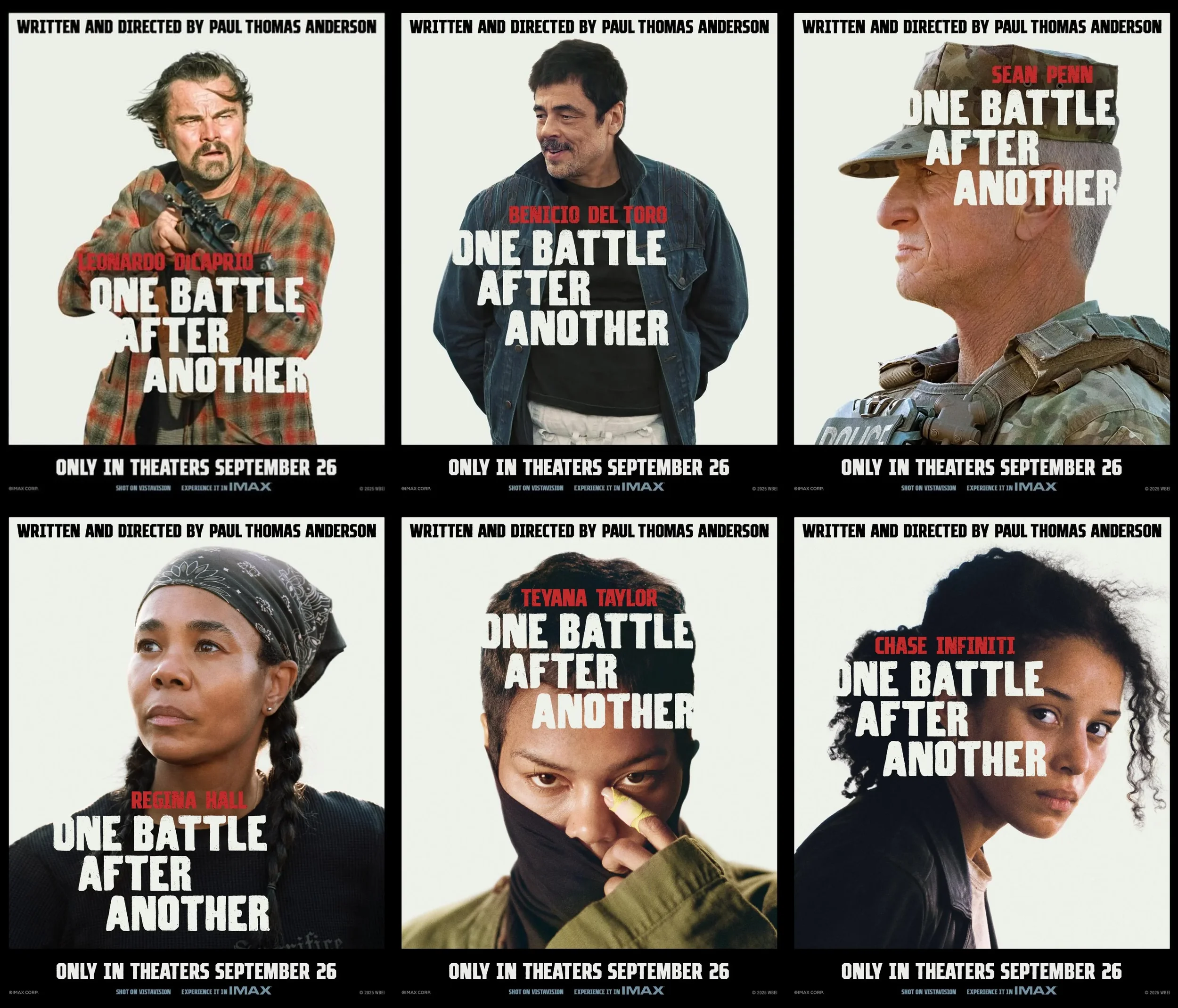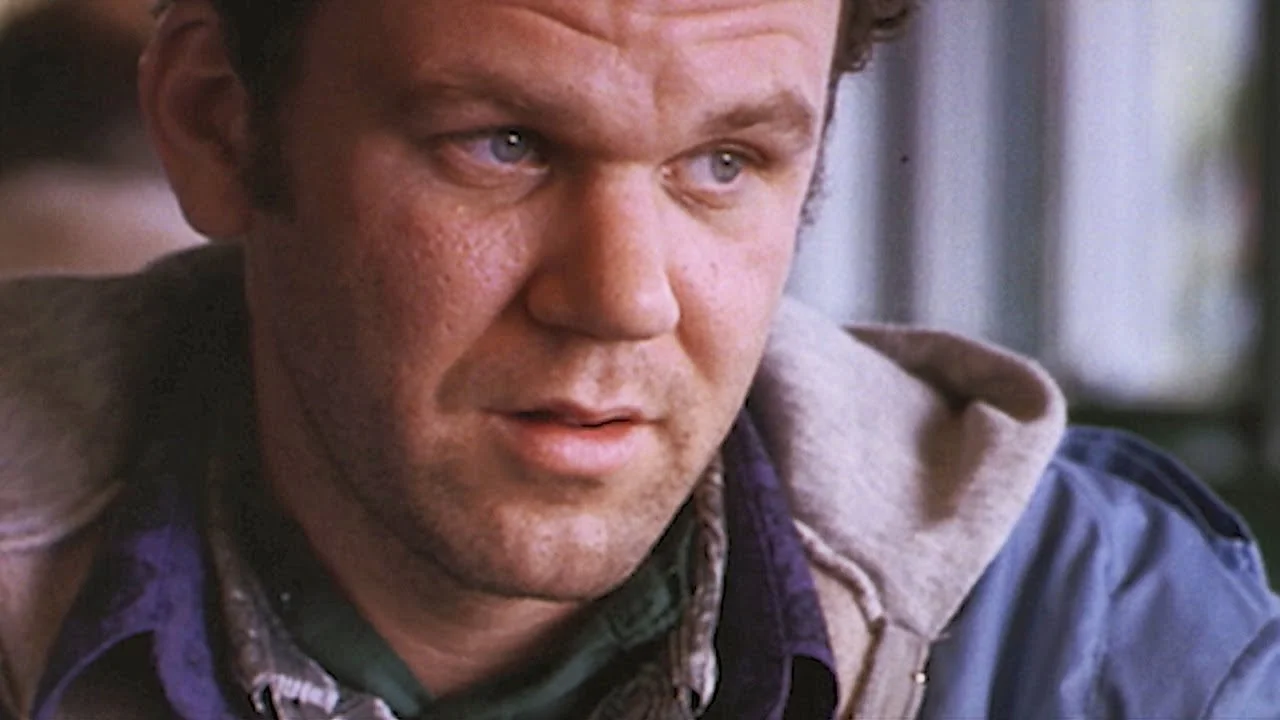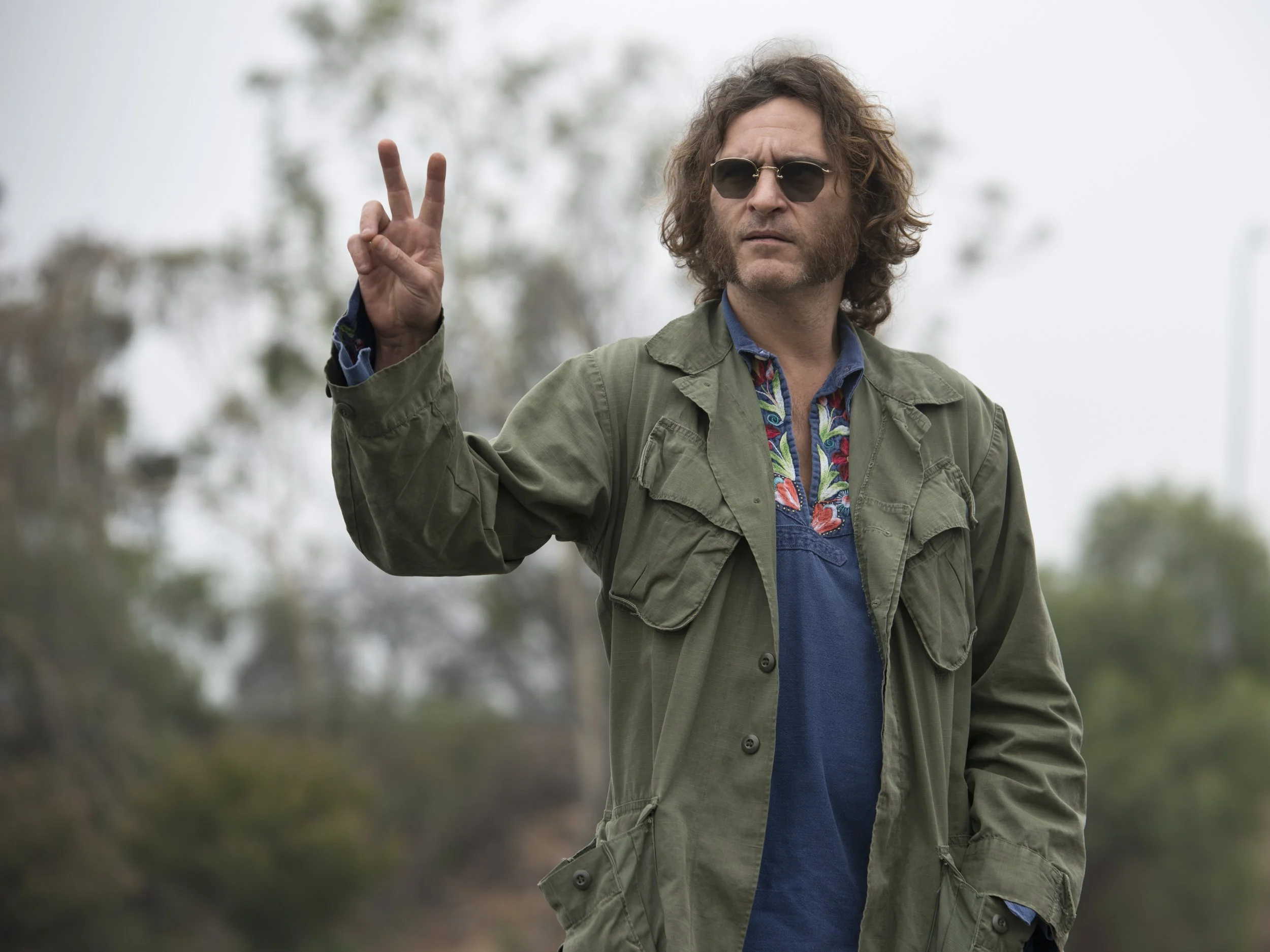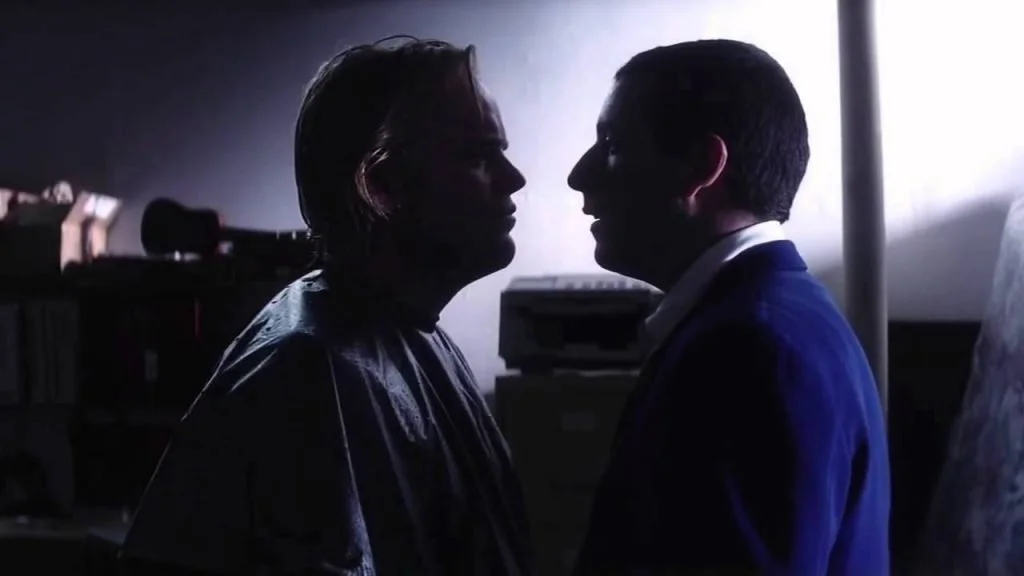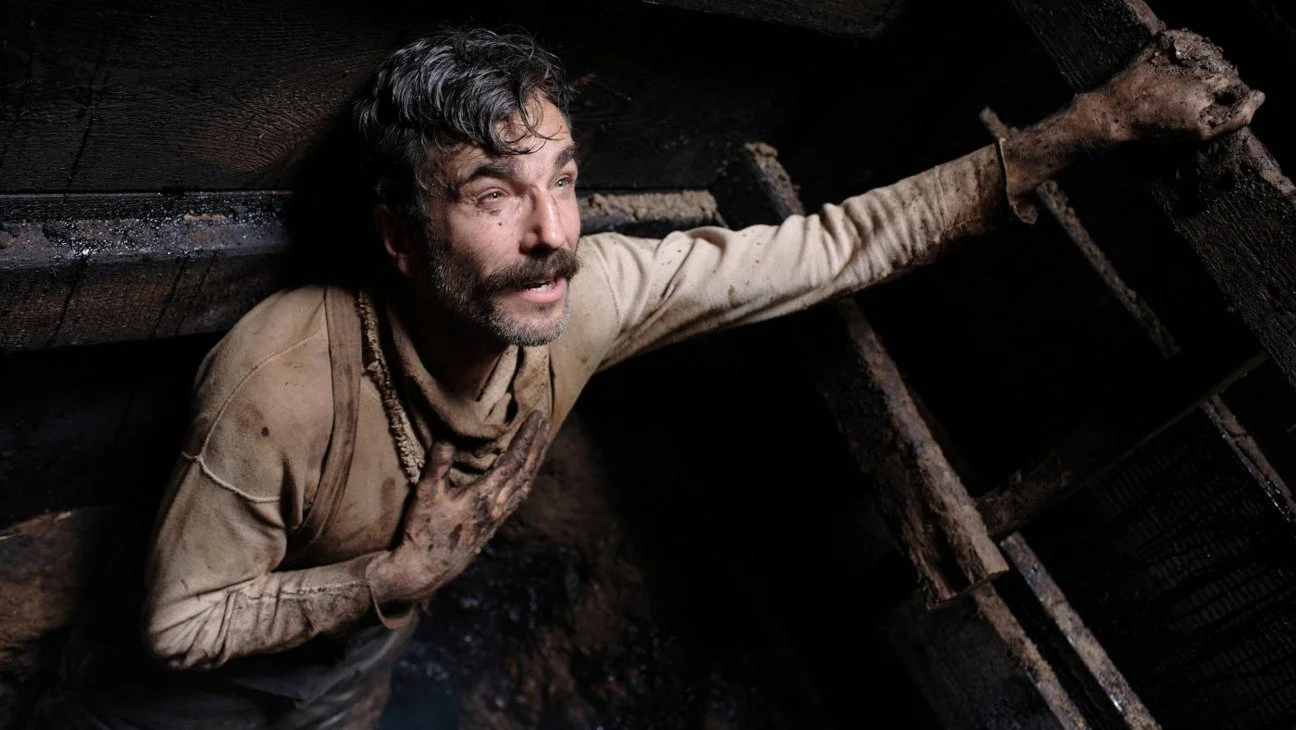Where to Start with Paul Thomas Anderson: What to Watch Before ‘One Battle After Another’
Warner Bros.
Set to release his tenth feature film starring Leonardo DiCaprio, discover where to start with Anderson’s celebrated filmography, from Licorice Pizza to Magnolia.
Anderson’s oeuvre has taken us from the 19th century California oil boom to dressmaking in 1950s London, post-World War II cults, and the 1970s porn industry. Here’s where to start with the acclaimed director’s filmography in anticipation of his newest feature, One Battle After Another.
In theatres September 26, Paul Thomas Anderson’s newest adaptation will star Leonardo DiCaprio alongside Sean Penn, Benicio del Toro, Regina Hall, Teyana Taylor, Alana Haim, and Chase Infiniti. Inspired by Thomas Pynchon’s 1990 novel Vineland, One Battle After Another follows in the footsteps of Anderson’s previous literary adaptations—Inherent Vice(also based on a novel of the same name by Pynchon) and There Will Be Blood (based on the novel Oil! by Upton Sinclair).
Anderson’s filmography is diverse in its subject matter but united in its focus on dysfunctional relationships, power structures, addiction, and the American Dream. From his most accessible (Licorice Pizza), to the mishits (sorry Inherent Vice), oddballs (Punch Drunk Love, I’m looking at you), and those with inflated egos (There Will Be anger at that statement), Anderson’s best filmmaking is unparalleled in its depth, complexity, and ability to reflect the human experience.
1. Licorice Pizza (2021)
Amazon MGM Studios
An easy entry point into Anderson’s work, Licorice Pizza follows Alan Kane (Alana Haim) and Gary Valentine (Cooper Hoffman) coming-of-age in the 1970s San Fernando Valley.
Whilst critically acclaimed (it was nominated for Best Picture, Best Director and Best Original Screenplay at the 94th Academy Awards), it was somewhat of a miss with audiences, only making $33 million against its $40 million production budget.A comedy drama with a budding love story at heart, it lacks many of the complex, multilayered themes and strong performances that have defined Anderson’s career. Instead, this is a happy go lucky, feel-good watch and an easy entry point to PTA’s work.
2. Hard Eight (1996)
Image via The Samuel Goldwyn Company
Marking the beginning of Anderson’s recurring focus on father-son relationships, chosen families, and the American Dream, Hard Eight follows Sydney (Philip Baker Hall), a veteran gambler, and John (John C. Reilly), a homeless man who he transforms into his protégé. His directorial debut, Anderson was only 26 when the feature premiered at Sundance. The themes that have come to define Anderson’s career are fairly self-evident in the second shortest film in his oeuvre.
Hard Eight offers a window into Anderson’s future, foreshadowing his emphasis on complex characters and giving us our first glimpse of Philip Seymour Hoffman (credited as an unnamed Young Craps Player) who would go on to star in a further four PTA films. Gwenyth Paltrow and Samuel L. Jackson make up the cast in what is an engaging and at times unpredictable, but easy-to-follow narrative.
3. Boogie Nights (1997)
image via New Line Cinema
The film that brought Anderson his first significant critical and commercial success, Eddie Adams (Mark Wahlberg) is a nightclub dishwasher in the San Fernando valley who, after being approached by Jack Horner (Burt Reynolds), finds fame and riches in the 1970s adult entertainment industry.
A survey of the Golden Age of Porn as much as of its characters, Dirk Diggler (Eddie Adams’ porn persona) was a box office success and sparked the acting career of then Marky Mark-frontman and Calvin Klein model Mark Wahlberg, with Variety stating Wahlberg is “bound to become a star after this movie” (in spite of which, Wahlberg has since said he regrets the role, adding that he hopes “God is a movie fan and also forgiving”).
Earning three Academy Award nominations, Boogie Nights is an example of Anderson’s ensemble casts at their best. Full of odd characters, Anderson creates his own universe and set of personalities that are each unique yet convincing. Julianne Moore is exceptional as mother-figure and porn queen Maggie, with both her and Burt Reynolds picking up Best Supporting Actress and Actor nominations. Anderson’s favourite themes of surrogate families and the American Dream are easy to track, while the closing scene payoff remains amusingly unexpected.
4. Inherent Vice (2014)
Warner Bros. Pictures
Anderson’s next two features sit slightly out of place with his broader filmography. Inherent Vice, based on the 2009 novel by Thomas Pynchon, follows Larry ‘Doc’ Sportello (Joaquin Phoenix), a private investigator (and stoner) through the criminal underworld of 1970s Los Angeles, investigating the disappearance of his ex-girlfriend Shasta Fay (Katherine Waterston) and her wealthy new boyfriend.
Whilst nominated for Best Adapted Screenplay and Best Costume Design at the 87th Academy Awards, Inherent Vice was not met with the outright success or critical acclaim Anderson had by this time experienced with There Will Be Blood, Magnolia and to a lesser extent The Master, also starring Phoenix. Released two years later, Inherent Vice is the less interesting, satisfying, and altogether less pleasurable watch of Phoenix’s two collaborations with Anderson. Lifting dialogue directly from Pynchon’s novel, the two and a half hours of events become increasingly confused, elusive and sometimes outright incomprehensible. A speed bump on the way to Anderson’s work which combines this tonal intensity with a coherent set of events – this is one to watch for mood rather than plot.
5. Punch Drunk Love (2002)
Columbia Pictures
The shortest film in Anderson’s oeuvre (made directly after his longest, Magnolia, in 1999), follows lonely entrepreneur Barry Egan (Adam Sandler) as he falls in love with his sister’s coworker Lena (Emily Watson) whilst also being extorted by a phone-sex hotline operator.
Punch Drunk Love continues Anderson’s trend of following characters through times of budding innovation (from World War Two to the porn industry, the oil boom, Magnolia’s heralding of incel culture, and in this instance, scammers), retrospectively exploring the upheaval caused by inventions that have changed the way we live and now consider normal. A one-off performance from Adam Sandler that demonstrated his range as an actor, Punch Drunk Love is a quirky – if unconvincing – feature. Not as hard hitting as Anderson’s other work, what are its most interesting elements (Barry Egan himself, challenging family dynamics and an electrifying Philip Seymour Hoffman) are quickly replaced with an unconvincing love story.
POPULAR ON THE CINEMA GROUP
6. There Will Be Blood (2007)
Paramount Pictures
The most popular, ‘must-watch’ heralded of Anderson’s filmography, Daniel Day Lewis is singular in his portrayal of Daniel Plainview, an oil prospector in the late 19th and early 20th century southern California oil boom.
Based on the novel Oil! by Upton Sinclair, There Will Be Blood is a good place to stop for an emotional, hard-hitting Anderson film without having to work too hard or descend into the strange and freaky. Anderson’s favourite themes of father-son relationships and the American Dream are self-evident in the story of a man who will do anything to achieve power and riches. The popular choice for Anderson’s best work, the film was released to widespread acclaim and won Day-Lewis Best Actor (as well as Best Cinematography for Robert Elswit) at the 80th Academy Awards. Whilst its popularity has remained over time, this is not actually Anderson’s true masterpiece (instead, it’s a work that grasped the attention of a specific generation at a specific time).
Whilst Day-Lewis’ performance is spellbinding (if excessive), There Will Be Blood does not house the intricacy or multi-faceted nature of Anderson’s other films. At his best, Anderson bestows an unquantifiable, intangible intensity onto his characters – and crucially – the space in between them. Day-Lewis’ intensity as Daniel Plainview does the opposite, taking up all the space on the screen and relegating other characters to the periphery. Even Plainview’s nemesis Eli Sunday (Paul Dano) is left unstudied and oversimplified. This is a must-watch Anderson, but there are better to come.
7. Phantom Thread (2017)
Focus Features
The second of Daniel Day-Lewis’ collaborations with Anderson, Phantom Thread stars Day-Lewis as the 1950s haute-couture designer Reynolds Woodcock, a meticulous dressmaker who takes on Alma (Vickey Krieps) as his muse and lover. Distinct from the rest of Anderson’s filmography in its setting (England) and its period status, Phantom Thread is perhaps the most forgotten-about PTA film and Day-Lewis performance. Yet, Anderson is at his most powerful in his ability to capture and radiate a depth of emotion – often without much dialogue – and immerse us in not just a time period and setting, but between two characters: within the relationship itself.
His most successful and impactful survey of two main characters (when compared to its predecessor Punch Drunk Love and successor Licorice Pizza), Phantom Thread is at once touching, sinister and bizarre, with the best – and most disquieting – final scene of Anderson’s oeuvre.
8. The Master (2012)
Weinstein Co.
Anderson’s 2012 psychological drama that was partly inspired by Scientology founder Ron Hubbard and the novel V. by Thomas Pynchon. The Master follows Freddie Quell (Joaquin Phoenix), a World War Two veteran who falls in with Lancaster Dodd (Philip Seymour Hoffman), the enigmatic cult leader.
Anderson has stated that The Master is his personal favourite of his films, and it seems to be the culmination of his focus on chosen families, dysfunctional relationships andfather-son dynamics (his later films Phantom Thread, Inherent Vice and Licorice Pizza all depart into new symbolic territory). As with Magnolia, the final film on this list, The Master uses one group of characters as a microcosm for society, doing what Anderson does best – imbuing characters, events and dialogue with a greater meaning, in a singular style.
Having set the foundations with Anderson’s more easily accessible work – through the oddballs and popular picks – both The Master and Magnolia sit at the pinnacle of this list due to their richness of their symbolism, their unique tone, and their length (Magnolia is over three hours long). Both require more time, energy and intellectual effort to fully appreciate their complexity, but both are the most rewarding when you do so.
9. Magnolia (1999)
New Line Cinema
Considered by many to be his magnum opus, Magnolia is a three-hour epic with biblical overtones that sways into the surreal and allegorical. Anderson’s most hard hitting, complex exploration of the search for meaning, fate, and the connectivity of human life, it features an ensemble cast (Tom Cruise, Philip Seymour Hoffman, Julianne Moore, William H. Macy, John C. Reilly, Jason Robards, Philip Baker Hall, Melora Walters and more) in the San Fernando Valley for one day, following a group of characters that live intersecting lives.
Anderson brings us an existential meditation on pain, misery and exploitation. Whilst featuring repeat collaborators Julianne Moore, Philip Seymour Hoffman and Philip Baker Hall, much of Magnolia is driven by Tom Cruise’s strongest and most vulnerable performance – a captivating anomaly in a career defined by invulnerability. Anderson imbues each character with an originality, emotional weight, and veiled inner life that truly reflects the magnitude of lived experience. The result is simultaneously subtle and profound, a worthy end to the filmography of one of the greatest living American filmmakers.

